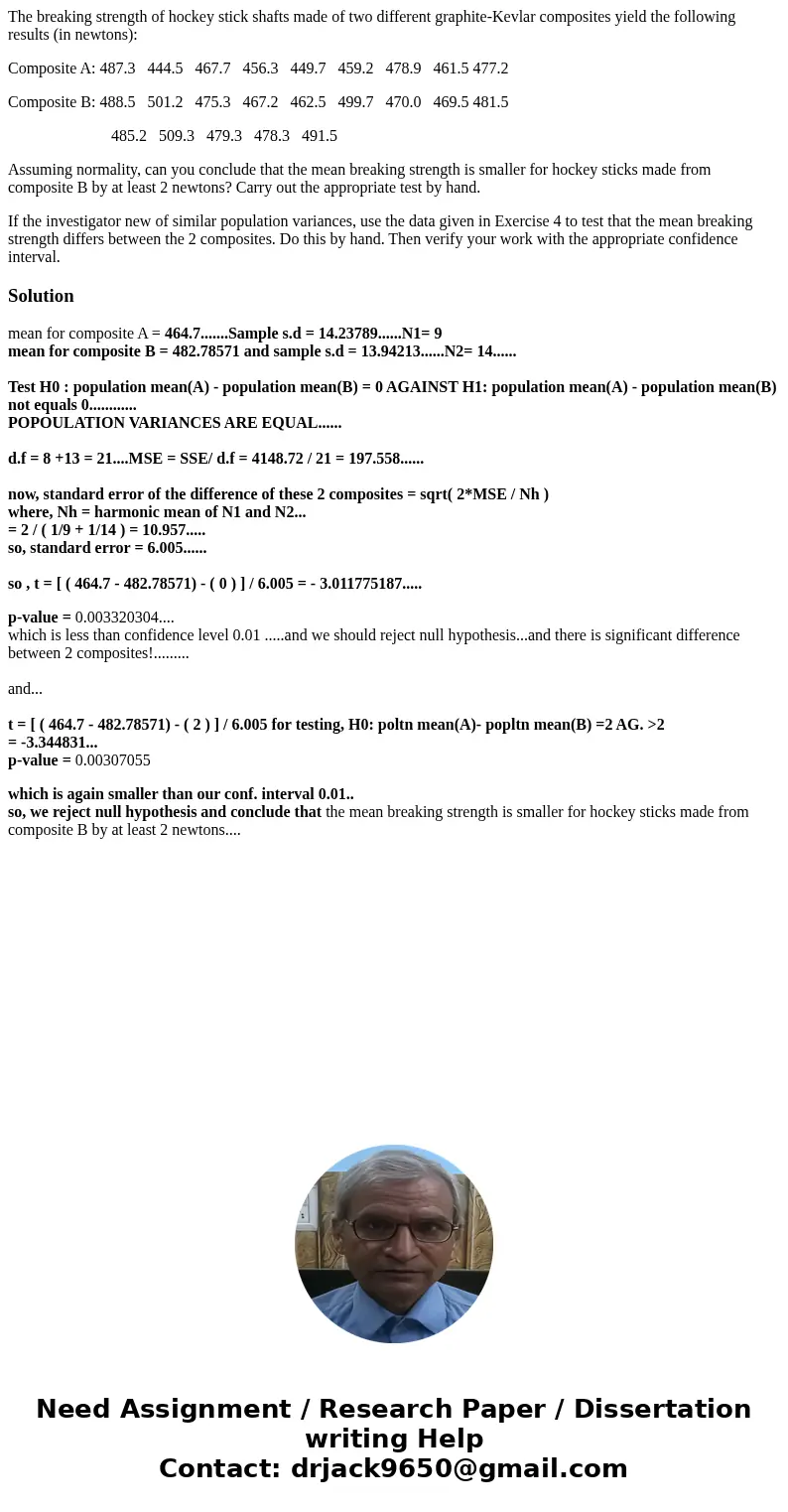The breaking strength of hockey stick shafts made of two dif
The breaking strength of hockey stick shafts made of two different graphite-Kevlar composites yield the following results (in newtons):
Composite A: 487.3 444.5 467.7 456.3 449.7 459.2 478.9 461.5 477.2
Composite B: 488.5 501.2 475.3 467.2 462.5 499.7 470.0 469.5 481.5
485.2 509.3 479.3 478.3 491.5
Assuming normality, can you conclude that the mean breaking strength is smaller for hockey sticks made from composite B by at least 2 newtons? Carry out the appropriate test by hand.
If the investigator new of similar population variances, use the data given in Exercise 4 to test that the mean breaking strength differs between the 2 composites. Do this by hand. Then verify your work with the appropriate confidence interval.
Solution
mean for composite A = 464.7.......Sample s.d = 14.23789......N1= 9
mean for composite B = 482.78571 and sample s.d = 13.94213......N2= 14......
Test H0 : population mean(A) - population mean(B) = 0 AGAINST H1: population mean(A) - population mean(B) not equals 0............
POPOULATION VARIANCES ARE EQUAL......
d.f = 8 +13 = 21....MSE = SSE/ d.f = 4148.72 / 21 = 197.558......
now, standard error of the difference of these 2 composites = sqrt( 2*MSE / Nh )
where, Nh = harmonic mean of N1 and N2...
= 2 / ( 1/9 + 1/14 ) = 10.957.....
so, standard error = 6.005......
so , t = [ ( 464.7 - 482.78571) - ( 0 ) ] / 6.005 = - 3.011775187.....
p-value = 0.003320304....
which is less than confidence level 0.01 .....and we should reject null hypothesis...and there is significant difference between 2 composites!.........
and...
t = [ ( 464.7 - 482.78571) - ( 2 ) ] / 6.005 for testing, H0: poltn mean(A)- popltn mean(B) =2 AG. >2
= -3.344831...
p-value = 0.00307055
which is again smaller than our conf. interval 0.01..
so, we reject null hypothesis and conclude that the mean breaking strength is smaller for hockey sticks made from composite B by at least 2 newtons....

 Homework Sourse
Homework Sourse